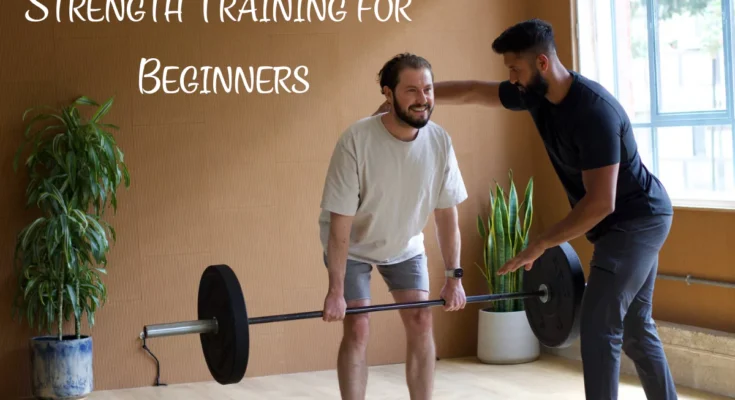Hey People! Endurance training is a generic exercise category that consists of developing overall body strength. To the neophytes, beginning a strength training program is equally invoking and challenging. The information in this guide is a brief primer that will guide you on the basics of muscle building as you start your muscular development journey.
Let’s dive in!!
Table of Contents
Strengthening Training

Strength training entails placing all muscles through resistance to cause contraction and increase size and strength. Whether you are doing strength training with weights, bands, or just your body weight, the focus is to push your muscles harder with time.
Benefits of Strength Training
Increased Muscle Mass: Strength training helps develop lean muscles and improves physical and metabolic health.
Enhanced Strength and Endurance: Auflösung ist wichtig, um den eigene Ausführungen von alltäglichen Aufgaben und Aktivitäten zu Steigerung ihrer Leichtigkeit zu trainieren.
Improved Bone Health: Strength exercises maintain bone density, lowering osteoporosis incidence.
Better Posture and Balance: Developing the muscles of the abdomen, back, and pelvis helps patients maintain proper body positions and reduces falls.
Boosted Confidence: Something that has come out clearly from the body-building process is that self-esteem and motivation also increase with improvement in strength.
Key Exercises for Beginners
Bodyweight Squats: They may be felt during activities such as standing up straight with the feet placed shoulder-width apart. Bend at the middle of your body like sitting in a Phenomenal chair, with your knees strictly behind the heels. Slide back onto your heels to get up. They recommend that you do three sets of 10-15 repetitions.
Push-Ups: Start on the ab stretch or plank pose with your hands spread wider than shoulder distance apart. Bend your knees, take it to the ground so that your chest almost touches it, and then push up. If it becomes very hard – do the push-ups on your knees if necessary. Optimal repetitions should be 6-12 sets in three sets.
Dumbbell Rows: Take a dumbbell in your right hand, bend forward, and maintain a perfect spine posture. Then, pull the dumbbell towards your hip while feeling the squeeze at the back of your shoulder blade. The second exercise involves doing alternate arms, where one does three sets of 8-12 reps on each arm.
Plank: Bend your wrists and put your forearms on the ground so your body forms a straight line from your head down to your toes. Hold for 20-60 seconds. Thanks for helping build up muscles in your belly and supporting your stability.
Deadlifts: Stand with your feet shoulder-width apart and grasp a dia or bar of weight with both hands at your fronts. Bend at the hips only, keep your back straight, and bring the weight as close to the ground as possible. Return to standing again, and you must engage your glutes and hamstrings. Try to do three sets of 8-10 reps.
The following video explains about Benefits of Strength Training:
Tips for Success

Start Light: If you are starting your journey to strength training, use little weights or any type of weight. Slowly bringing intensity up and down as tolerance increases.
Focus on Form: Concentrate never on lifting heavier pounds. Rather, focus on the right form when exercising.
Stay Consistent: You should do strength training sessions two to three times a week to give your muscles a break between the sessions.
Incorporate Variety: This is to avoid monotony, which is not good when undertaking a particular exercise regimen for some time.
Listen to Your Body: If you feel pain (more than basic soreness) during the exercise, you should discontinue it and see if you are doing it right or check with an expert.
FAQ
1. How frequently should you just start exercising and do strength training?
Ideally, it’s between 2-3 sessions, always separating them by days in between to allow the muscles to rest.
2. Many beginning strength trainers ask themselves, ‘Do I have to join a gym to strength train?
I slept on. No! There are so many complete workouts that you could administer at home with minimal gear, such as dumbbells or resistance bands.
3. If exercise becomes painful, what should I do?
That’s why you should stop the exercise in the middle with a warning that it is the end. Check your form, and see a doctor if the pain is still in you.
4. How soon will I see the results if I start to work on my strength?
After 4-6 weeks of dedication, you can observe slight changes in muscle tone and power.
5. In essence, is strength training delegated well for everybody?
In most cases, yes; however, people with some medical conditions should seek advice from their GP before participating in any exercise.




